
One of my reasons for stopping at Singapore was to visit Bukit Timah Nature Reserve, a park that I've heard a lot about but that I haven't been able to visit my previous time in Singapore. What sets it apart from other areas of Singapore is that it is uncut forest, and so a very well preserved native rainforest.
With only one day in Singapore and wanting to visit Bukit Timah, I did not really have time for the usual attractions, but I did see a few things along the way. First of all, flags were very popular, something I didn't remember from my last visit. I suspect they were up to celebrate Singapore's national day on August 9th.

Singapore is determinedly multi-cultural. Although all the announcements on the subway were in English, many people I tried to talk to would not admit to knowing English, and all the signs are in multiple languages.

The area of town my hotel was in was between two subway stations called "Lavender" and "Bugis", and the street my hotel was on was called Jalal Sultan, in what I believe is the Arab quarter of Singapore. Here are some traditional houses and a mosque in the neighborhood.


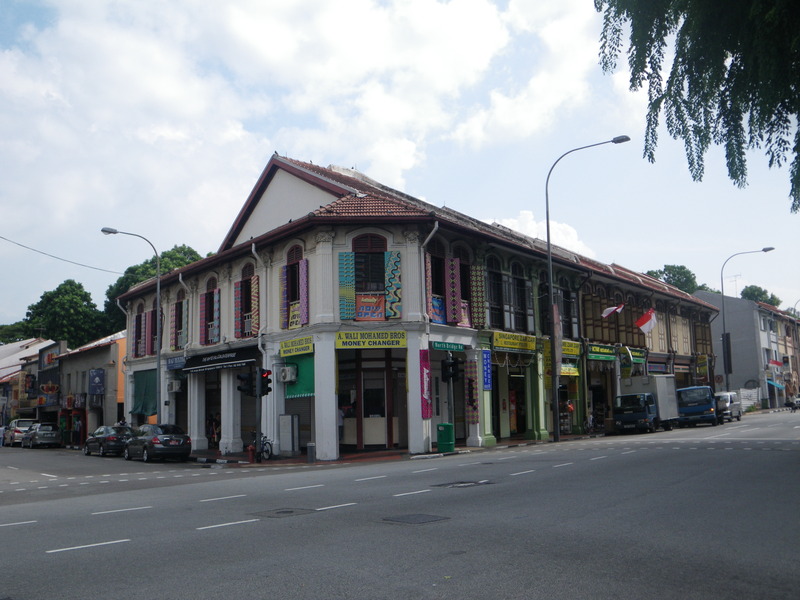

Bukit means "hill" in the Malay and Indonesian languages. Bukit Timah also happens to be the highest point in Singapore. So now, I have climbed the highest peak in Singapore. It is 163.63m high, which means that about 54 Bukit Timah, one on top of the other, might approach the height of Mt. Everest. Seen from the street, it does not look particularly impressive -- Bukit Timah is the hill under the radio towers.
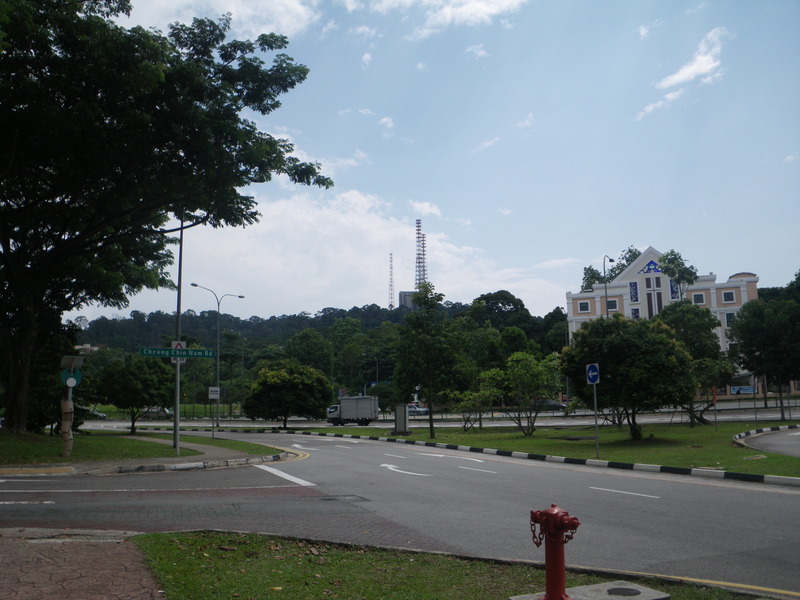

The map shows several trails in and around Bukit Timah, as well as flooded quarries to the West of the summit.
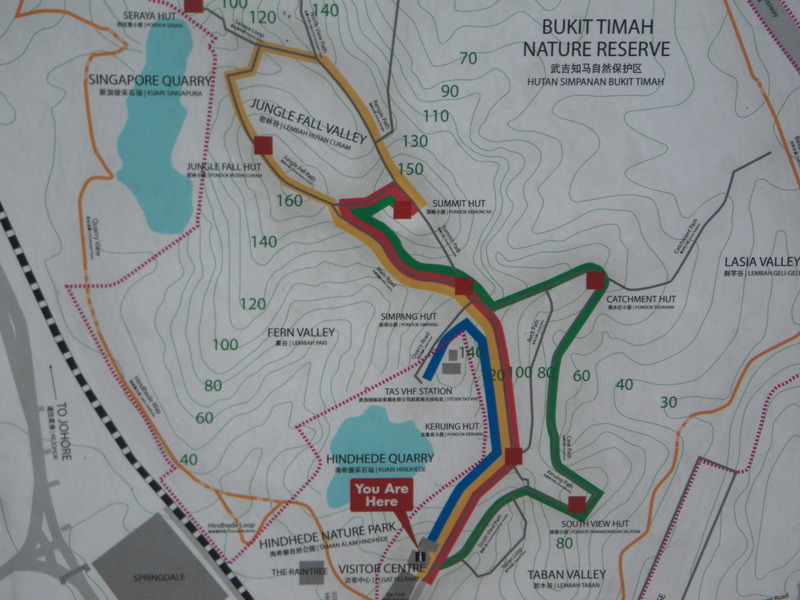


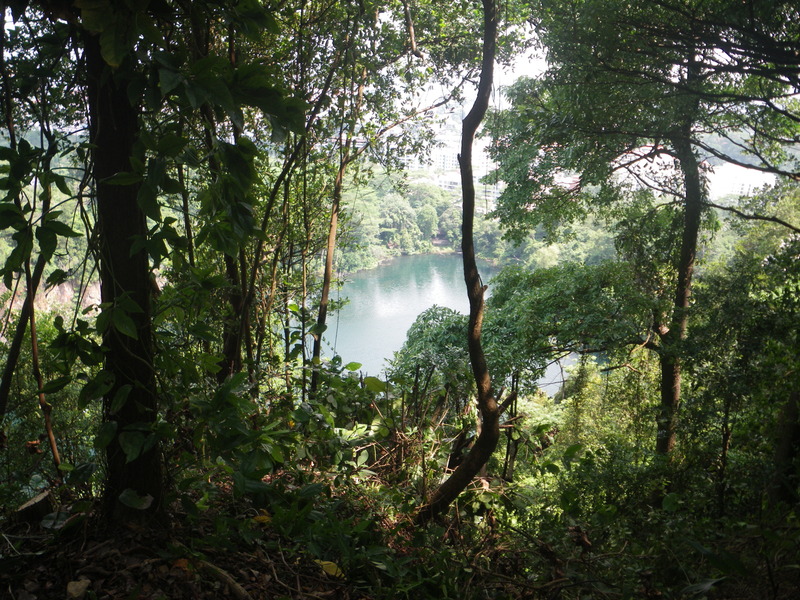
I am not sure if it is obvious from the pictures, but the water is a good 100m or more below the place from where I took the picture.
I went to Bukit Timah primarily to see the plants, but there are also a few animals. No longer the wild tigers that English colonists complained about in the mid 1800s, but many birds and even a monkey, which you may find if you look carefully in the next pictures.

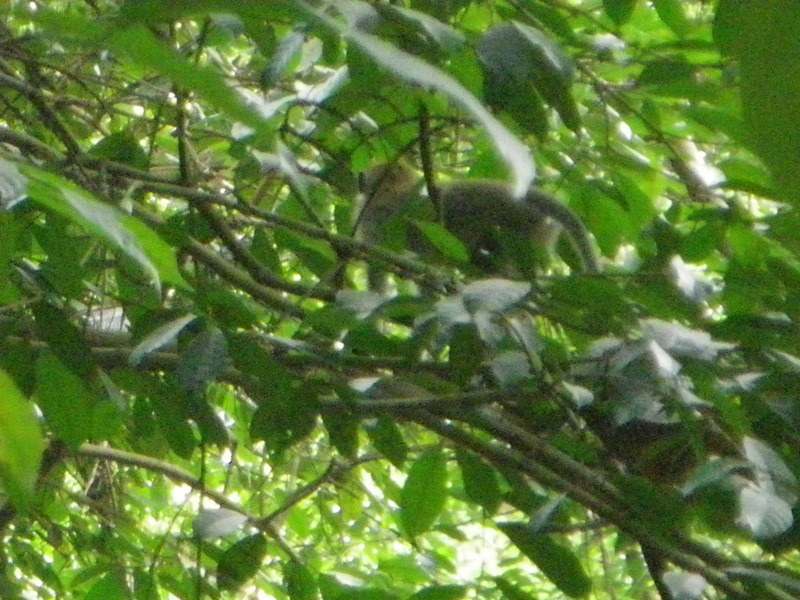
I also saw a monitor lizard, probably about 30-50cm long.


The nature reserve also hosts flying lemurs (Cynocephalus variegatus peninsulae), but I didn't see any. The visitors center has a very nice video of one, however. There are supposedly also flying squirrels, pangolins, civets, and a lot of reptiles and birds.
The plants were very nice, but as usual, it is rather challenging for me to take pictures of trees or shrubs in a forest. Instead, here is a view from a slightly more open place.

I believe the taller trees at the summit of the hill are dipterocarps, which are described as "emergent" since they emerge above the main forest canopy. The next pictures are slightly closer views of dipterocarps.


The last one, according to the sign, is "one of the largest trees ever recorded in Singapore, with a girth of 7 metres", and is a Pulai, Alstonia angustiloba.
As it might be in Hawaii, the open area was covered in uluhe (Dicranopteris linearis), a fern that is at home in many tropical parts of the world.

I also found some Clidemia hirta, and I guess it is invasive here as it is in Hawaii.
Many of the plants are labeled, and clearly there is a huge diversity. Here are some of the more curious plants I saw. This is a big vine covered in big bumps, and most of the bumps have little thorns at the end.

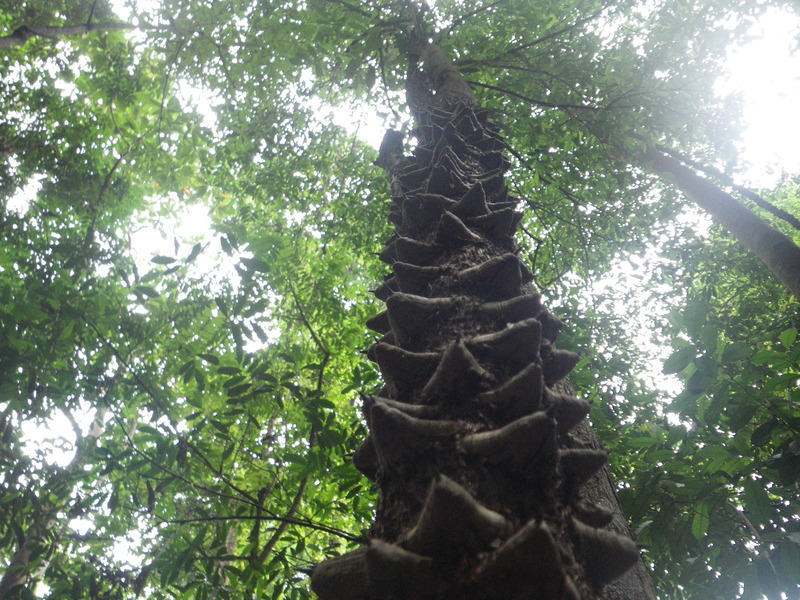
This tree, a Kayu Arang (Cratoxylum cochinchinense), sheds its bark to prevent the growth of epiphytes.

Some nice flowers.


The second picture above is a ginger flower, and was near the visitors center, so it may have been planted.
I am not sure what this plant is, but it looks interesting.

This tree grows on aerial roots.

This tree, a Merombong (Adina rubescens), has a trunk with lots of holes.


This Keranji (Dialium Maingayi), like many other trees here (and in the Daintree National park in Australia), has beautiful buttress roots.

There were quite a few nice mushrooms.

Rattan palms, which are quite thorny.

The trail crossed several small streams with a profusion of plants, including some small tree ferns.


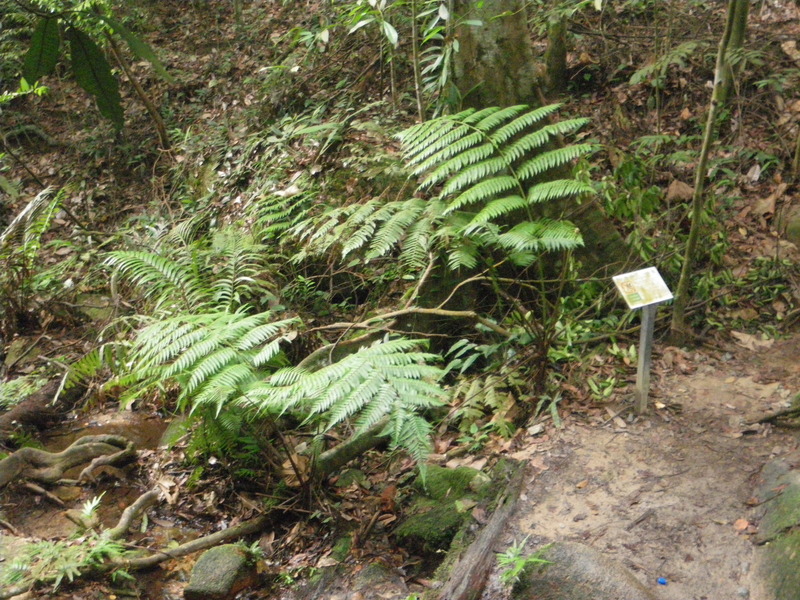
Of course, being in the middle of a small island with a lot of people, Bukit Timah has not completely been left to itself. During the Japanese conquest in 1942, one of the last stands of the defending English garrison was on Bukit Timah. I also found one tunnel showing the proverbial light at the end of the tunnel.

I have been flying quite a bit in the past few days. Here is a picture of me in the subway in Singapore with my two backpacks, on my way to the airport leaving Singapore on August 7th.

Over the past few days I have also had quite a few window seats, with nice views, sometimes of the ground, but more frequently just of the wings. Here is a wing with the moon over Eastern Australia.


Here is a wingtip in the sunset.

